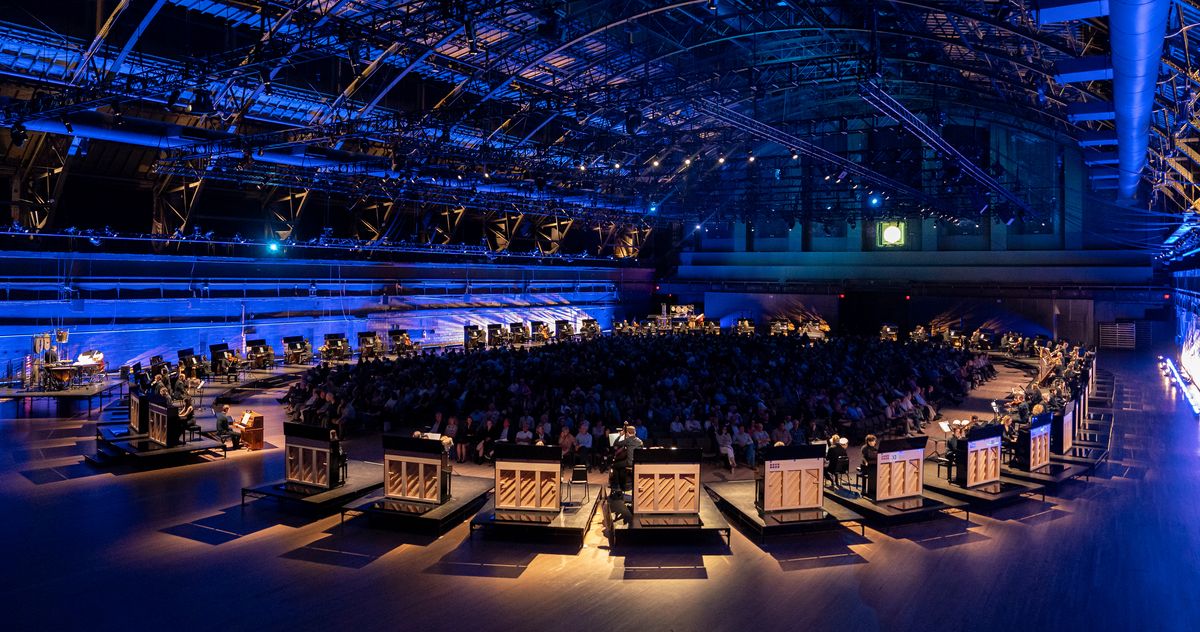
"Haas, an Austrian sage of microtonal music, has created his own sonic forest in the Park Avenue Armory's Drill Hall, encircling the audience with 50 pianos (each of which has about 230 strings) and a chamber ensemble (Klangforum Wien) that included a contingent of thunderous percussion. For just over an hour, currents of gritty, glinting sound swirled across the hall, gathering into thick roars or thinning out into quiet frenzies."
"Tuning a piano's 88 keys, like slicing up the year into smaller segments of time, is normally an exercise in approximation. Fifths aren't perfect and semitones are slightly off to prevent the keyboard from getting more jangly in some keys than in others. For this work, Haas had each upright piano retuned, cutting out the accepted cheats that equal temperament requires, and instead building in infinitesimal differences between adjacent instruments. The result is a widening drift: If you played a C-major scale across all 50 pianos, it would slide progressively into different keys."
Georg Friedrich Haas staged 11,000 Strings in the Park Avenue Armory's Drill Hall, encircling the audience with 50 pianos and a chamber ensemble, including thunderous percussion. The performance lasted just over an hour, with currents of gritty, glinting sound that gathered into thick roars or thinned into quiet frenzies. The experience depended on full, richly acoustic sound that cannot be approximated by recordings or canned music and enveloped listeners in all directions. Haas employed microtones and had each upright piano retuned, abandoning equal temperament cheats and building infinitesimal differences between adjacent instruments. The tuning choices produced a widening drift so that playing a C-major scale across all 50 pianos would slide progressively into different keys.
Read at Vulture
Unable to calculate read time
Collection
[
|
...
]